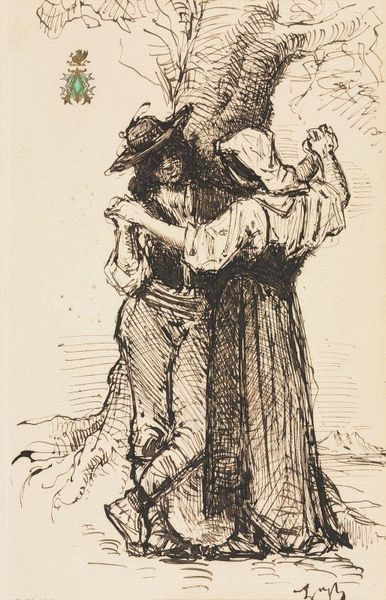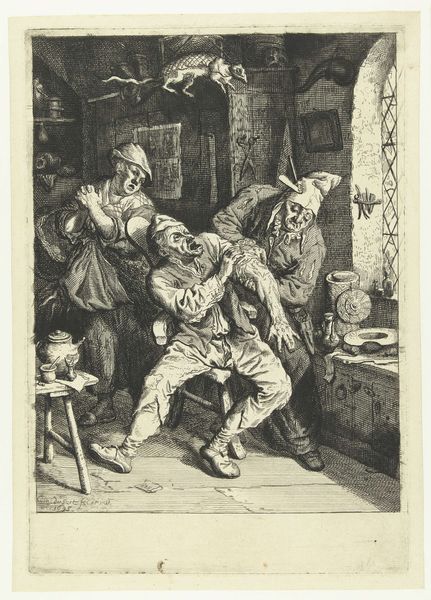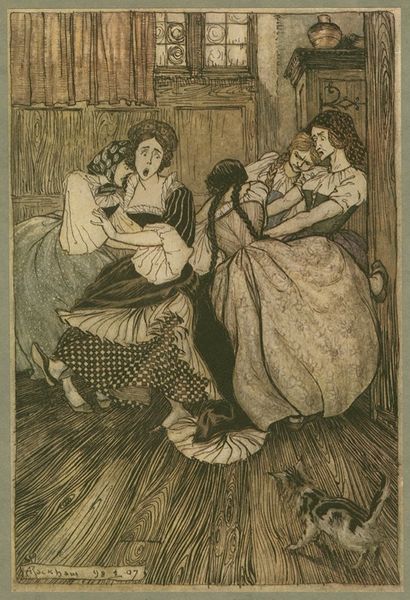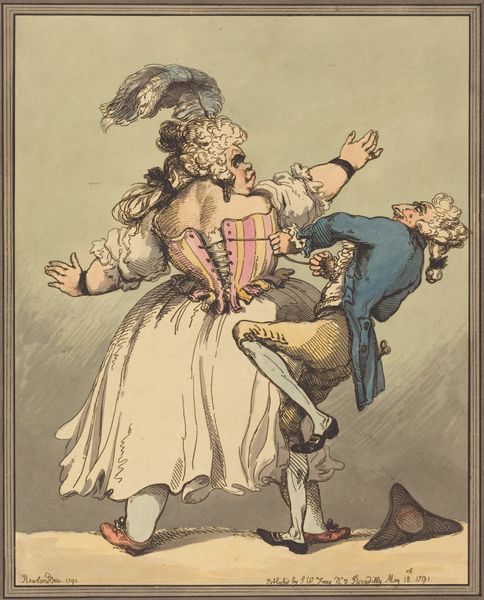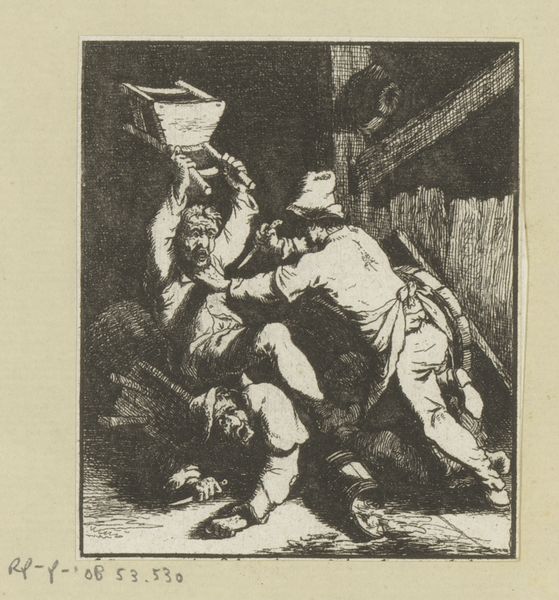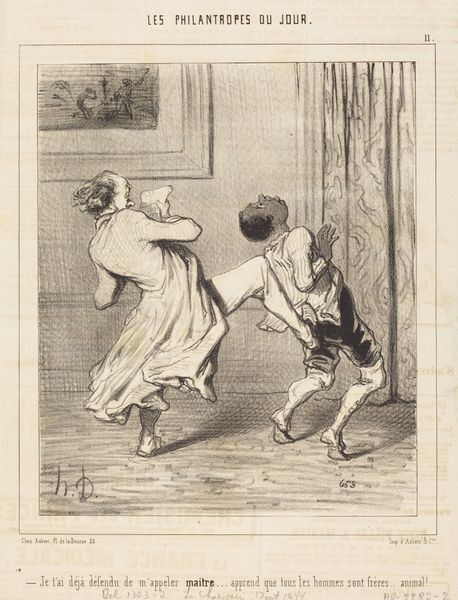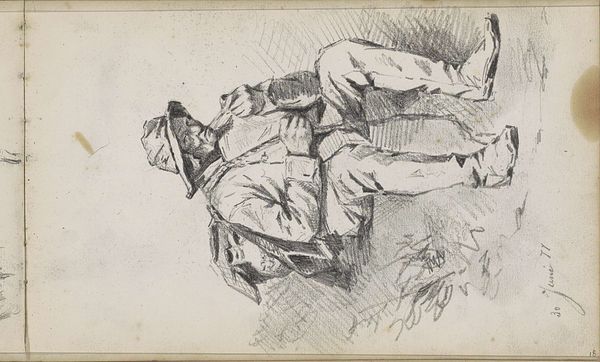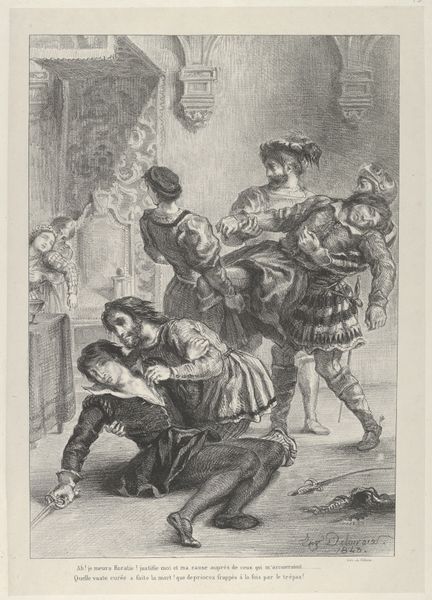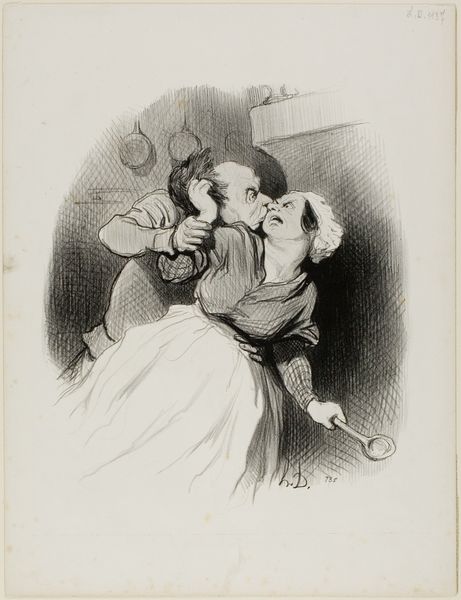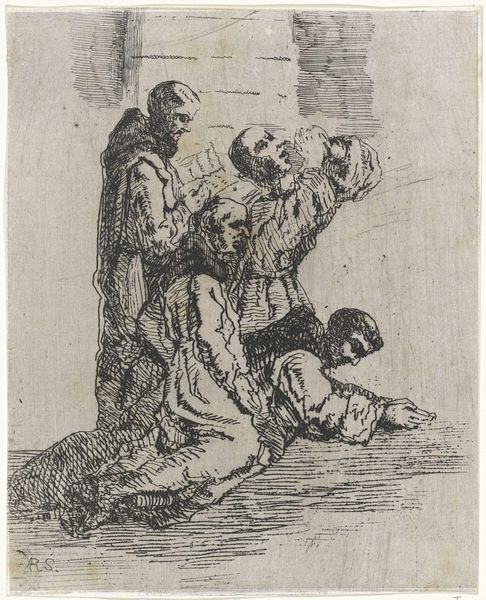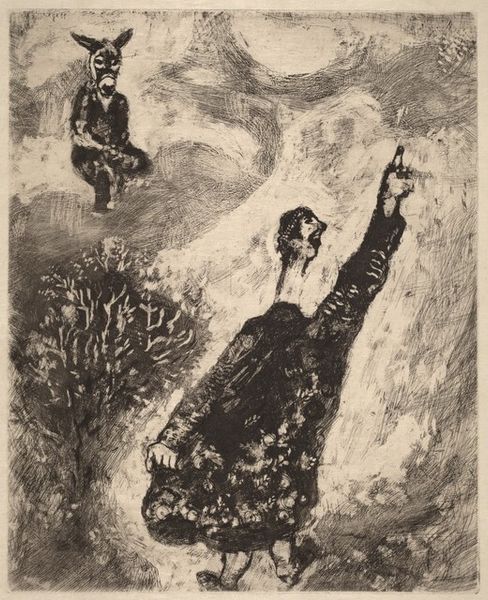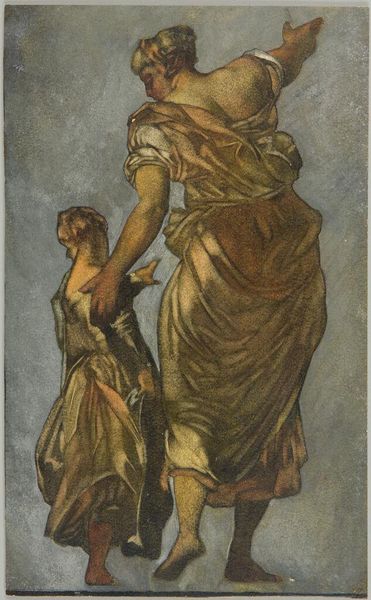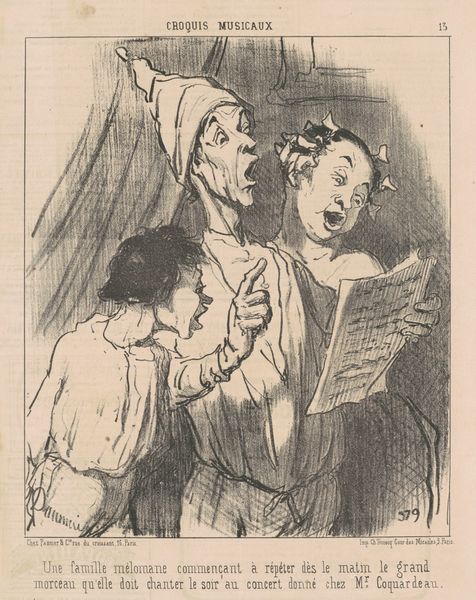
Copyright: Public domain
Editor: Here we have Byam Shaw’s “Carmen - ‘I Will Dance for My Pleasure’”, made around 1910, using gouache with a touch of impasto. The scene feels charged, like a moment plucked from a fiery narrative, yet the composition strikes me as almost theatrical. What do you see in this piece? Curator: Well, right away, I'm drawn to how Shaw utilizes color and costume as powerful signifiers. The red dress of Carmen, adorned with roses, isn’t just pretty—it's symbolic of passion, perhaps danger, and a certain deliberate display of femininity. How does that red interact with the man's uniform? Editor: It seems to dominate it completely. His slumped posture and almost comical, cartoonish figure with the red face next to such bright, imposing colours gives her a sense of strength. The colour red also seems to signify pain, though, maybe suffering? Curator: Precisely. The man’s face is hidden – robbed of identity. In art historical memory, how have powerful women used dance and performance to express control, desire, even resistance? Consider Salome, Judith... Dance has so many culturally inherited readings! The title too provides important symbolic weight, can pleasure only exist through display and a degree of violence? Is there pain here? Editor: It’s almost disturbing to see “pleasure” linked with this interaction. But maybe that's the point? The power dynamics feel so imbalanced. Curator: Indeed, it pushes us to consider how constructed symbols become tied up with human experience, creating a tapestry of psychological tension. The work is small, it invites us in, but delivers a disturbing punch! I’m left pondering what inherited memory will we read into it today? Editor: It’s certainly given me a lot to think about regarding the darker, performative aspects of pleasure and power.
Comments
No comments
Be the first to comment and join the conversation on the ultimate creative platform.
